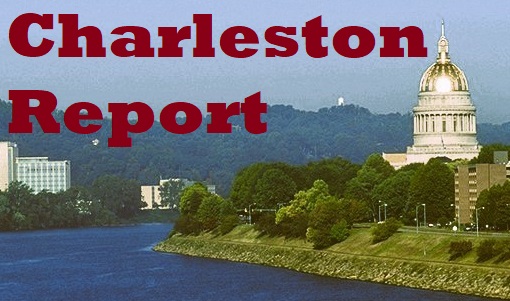September 22nd, 2020 by WCBC Radio
The Opioid Operational Command Center and the Maryland Department of Health have released their report on the opioid crisis in Maryland for the second quarter of 2020. The report includes preliminary data for unintentional drug- and alcohol-related intoxication deaths during the period between January and June 2020.
The second-quarter report outlines continued increases in opioid- and other substance use-related fatalities in Maryland. It is now clear that the coronavirus pandemic has created conditions that are driving increased substance misuse across the state and elsewhere.
There were 1,326 unintentional intoxication deaths from all types of drugs and alcohol reported in Maryland during the first two quarters of 2020. This figure is a 9.1 percent increase from the 1,215 intoxication deaths reported in the first half of 2019. Opioids were involved in 1,187 intoxication deaths during this timeframe, representing almost 90 percent of all such fatalities and an increase of 9.4 percent when compared to the same period last year.
“Our state, like the rest of the country, has been presented with daunting challenges in the past six months,” said Governor Larry Hogan. “We have seen the opioid crisis complicated by the coronavirus pandemic, and we have responded quickly and proactively. In June of this year, the state developed the COVID-19 Inter-Agency Overdose Action Plan, which has proved to be an invaluable resource. From the beginning of my administration, I have offered the full support of my office and the resources of every agency in the state to solve this problem, and this plan provides the framework for us to do that right now. In spite of the other challenges that we face, our dedication to reversing the devastation of the opioid crisis has not waivered.”
“The progress that we made against the scourge of opioids and other substances in recent years has been erased by the coronavirus pandemic in a few short months,” said Lieutenant Governor Boyd K. Rutherford. “It is up to us to fight back, and Marylanders need to know that we are mustering every resource at our disposal to do so. We took action as soon as we realized that our progress was in jeopardy, and the governor and I remain relentlessly committed to this work.”
“We have reached an inflection point in the opioid crisis,” added OOCC Executive Director Steve Schuh. “It is now clear that the coronavirus pandemic has had significant and detrimental effects on substance use trends in our state. Access to life-saving emergency services, substance use treatment, and recovery support have been disrupted by the coronavirus pandemic. When you add the despair caused by economic uncertainty, you have a very difficult set of circumstances for Marylanders suffering from substance use disorders. Using tools like our Action Plan, and with the collective support of all Marylanders, we can beat what is not just ‘the other public health crisis’ but what is a threat to the well-being of all.”
The synthetic opioid fentanyl continues to present serious challenges as it plays an increasing role in the majority of not only opioid-related deaths but also all intoxication-related deaths in the state. There were 1,100 deaths involving fentanyl through the second quarter of 2020, accounting for 92.7 percent of all opioid-related deaths and 83.0 percent of all intoxication-related deaths. Fentanyl-related deaths increased by 11.9 percent compared to the same period last year. Additionally, there was an 8.1 percent increase in deaths involving prescription opioids in the first two quarters of 2020 when compared to the same period in 2019.
The state is also tracking recent spikes in deaths involving non-opioid substances, including alcohol- and cocaine-related fatalities. Alcohol, in combination with other substances, was responsible for 287 deaths in the first half of 2020 – almost 35 percent more deaths than it was in the first half of 2019. Furthermore, there were 486 cocaine-related intoxication deaths in the first half of 2020, a 13.3 percent increase from the same period last year. The vast majority of fatalities involving non-opioid substances also involved opioids. Increases in deaths related to non-opioid substances are indicative of increases in substance misuse more generally and its exacerbation by the despair caused by the coronavirus pandemic.
Maryland’s proactive and rapid response to the pandemic’s effects on substance use focuses on coordinated planning and resource distribution. In June 2020, the OOCC released Maryland’s COVID-19 Inter-Agency Overdose Action Plan, a response strategy involving organizations throughout state government. The OOCC is working with over a dozen partners, such as MDH’s Behavioral Health Administration, to ensure that mortality-reduction, treatment, and recovery-support systems are in place for individuals in need. Through an arrangement established by the Action Plan, MDH and the OOCC have begun using new data sources to increase monitoring of overdose-related events so that resources can be directed to those areas of the state with the most need.
The state also has been involved actively in distributing grant awards targeted at opioid and substance use. At the end of August, the OOCC awarded nearly $10 million in state grant funding to support community-specific programs aimed at stopping substance use where it begins. The awards included $5.6 million in competitive grants and $4.0 million in block grants. The competitive grants will be used to address the needs of individual organizations around the state, while the block grants will be distributed among the Opioid Intervention Teams in each of the state’s 24 jurisdictions to fight the crisis in ways that best meet their local needs.
State agencies involved in the crisis response are also managing several large federal grants. BHA will begin distributing $50 million in State Opioid Response II funding in October. The SOR II grant will not only address opioid use disorder, but it will also address stimulant use disorders, cocaine, and methamphetamines. Additionally, the Maryland Department of Labor is directing $4.6 million in federal funding to seven diverse, local workforce areas representing 14 jurisdictions across the state that have experienced negative social and economic impacts as a result of the crisis.
The 2020 Second Quarter Report can be found here.
Before It’s Too Late is the state’s effort to bring awareness to the opioid crisis and to mobilize resources for effective prevention, enforcement, and treatment. Marylanders struggling with a substance use disorder can find help at BeforeItsTooLate.Maryland.gov; through our state's crisis hotline, Call 211, Press 1; or by texting their ZIP code to 898-211..


















